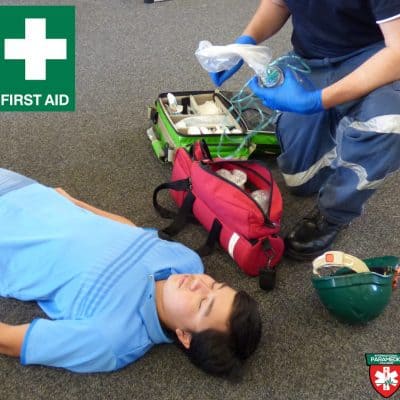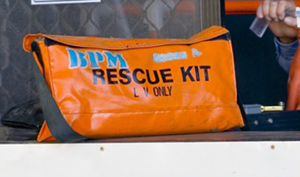Introduction
In today's busy globe, making sure the safety and health of children in instructional setups is of utmost significance. With enhancing problems about health emergencies and crashes happening in colleges and day care centers, the requirement for appropriate training in emergency treatment has actually never ever been more obvious. This short article looks into The Influence of Child care Emergency Treatment Training on Youngster Safety And Security in Educational Settings, discovering just how comprehensive training outfits teachers with crucial abilities to respond successfully to emergencies.

The Impact of Childcare Emergency Treatment Training on Kid Safety And Security in Educational Settings
Childcare emergency treatment training is not simply a recommendation; it's a requirement. When teachers are trained in emergency treatment, including CPR (Cardiopulmonary Resuscitation), they are better prepared to handle emergency situations ranging from small injuries to deadly circumstances. As an example, think of a situation where a kid collapses or suffers a serious allergic reaction. An educator equipped with first aid knowledge can provide immediate support while waiting for specialist help, potentially conserving a life.
Understanding First Aid Training
First help training incorporates various strategies and methods made to supply instant like a person suffering from an injury or illness till expert clinical help gets here.
What Does Emergency treatment Training Include?
- Basic life support Wound care Recognition of clinical emergencies CPR training Use of automated exterior defibrillators (AEDs) Handling choking incidents
By taking part in emergency treatment courses, instructors gain self-confidence and the capacity to act decisively during critical moments.
Importance of First Aid Certification in Educational Settings
Having a valid emergency treatment certification can substantially boost the security society within educational institutions. Qualifications validate that a specific possesses the needed skills and understanding to respond appropriately throughout emergencies.
Benefits of Being Licensed:
Enhanced Confidence: Knowing what to do can ease anxiety during emergencies. Legal Protection: In some jurisdictions, having certification can give lawful cover for educators acting in excellent faith. Promotion of Security Culture: A certified staff member encourages others to prioritize safety.Corporate First Aid Training vs. Child Care First Aid Course
While corporate emergency treatment training commonly focuses on adult-related injuries and office threats, childcare first aid courses especially address problems pertinent to children-- such as acknowledging indications of ailment that might differ from adults.
Key Differences
|Element|Corporate First Aid Training|Childcare First Aid Course|| -----------------------------|-----------------------------|----------------------------|| Target Audience|Adults|Kids|| Focus Locations|Office injuries|Pediatric emergencies|| Methods Emphasized|General first aid|Child-specific strategies|
Understanding these differences can help schools pick the appropriate sort of training for their staff.
Essential Abilities Educated in Childcare First Aid Courses
Educators enlisted in childcare first aid courses find out various essential abilities, which include:
1. Analyzing the Circumstance Quickly
The capacity to examine an emergency scenario is paramount. Quick assessment aids in establishing the https://ameblo.jp/zanezszo326/entry-12891578108.html most effective strategy, whether it entails calling for aid or providing fundamental care.
2. Carrying Out Mouth-to-mouth Resuscitation on Children
CPR techniques differ when put on youngsters versus grownups. Educators needs to learn age-specific treatments, such as compression depth and frequency tailored for babies and toddlers.
3. Managing Choking Incidents
Choking is common among young kids due to their exploratory nature and propensity to put items in their mouths. Understanding exactly how to execute back strikes and stomach thrusts is essential.
4. Replying To Allergic Reactions
With increasing prices of food allergies amongst youngsters, recognizing signs and symptoms like hives or swelling is essential. Educators ought to be trained on exactly how to carry out epinephrine auto-injectors if necessary.

5. Wound Care Techniques
Properly cleaning and clothing wounds stops infections, making it crucial for educators to know just how to manage cuts and scuffs effectively.

6. Managing Behavior Emergencies
Mental wellness emergency treatment is significantly acknowledged as vital within instructional setups, outfitting instructors with devices to assist pupils experiencing emotional crises or panic attacks.
Integrating Mental Wellness Understanding right into Child Care First Aid Training
Recognizing mental health's function along https://jsbin.com/wetuluyasu with physical wellness develops a more holistic strategy towards child security in educational settings.
Why Mental Health and wellness Matters?
Children face numerous stressors that can show up physically or mentally-- recognizing this interplay allows instructors not only to react yet also proactively support students' well-being.
Key Parts:
Understanding usual mental health and wellness concerns experienced by children. Techniques for de-escalating crises. Encouraging open discussions regarding sensations among students. Resources readily available for professional mental health and wellness support.Online Emergency treatment Courses vs In-Person Training
With improvements in modern technology, many institutions currently use online emergency treatment courses alongside typical classroom-based understanding experiences.
Benefits of Online First Aid Courses:
- Flexibility: Educators can finish coursework at their convenience. Accessibility: Ideal for those that might struggle with scheduling.
However, functional parts commonly require hands-on learning via workshops or demos held face-to-face.
Challenges Encountered by Educators Without Appropriate Training
When teachers lack adequate expertise of first-aid procedures, they might hesitate during emergency situations because of fear or unpredictability-- this reluctance can lead directly to unfavorable results for youngsters under their care.
Consequences Include:
Increased injury seriousness as a result of postponed response. Heightened anxiety levels among students witnessing emergencies. Potential lawful implications emerging from negligence insurance claims against inexperienced team members.Creating a Society of Safety And Security Via Continuous Education
Establishing continuous education and learning programs around childcare first aid promotes an environment where security becomes ingrained into everyday methods rather than being viewed as a separated duty restricted entirely throughout training sessions.
Implementing Normal Refresher Courses:
Regular refresher courses make certain that skills continue to be sharp while introducing new methods or procedures that may emerge with time due technical innovations within healthcare fields related very closely gotten in touch with youngster well-being requirements today!
FAQs
Q1: What need to I seek when choosing a childcare first-aid course?
When choosing a training course, ensure it covers pediatric emergency situation feedbacks tailored specifically in the direction of youngsters's distinct needs while being presented by licensed professionals experienced functioning within academic contexts!
Q2: Exactly how often need to I restore my certification?
Most qualifications call for renewal every 2 years; nevertheless examining local guidelines will certainly verify particular needs appropriate based upon your area could differ somewhat relying on administrative mandates!
Q3: Is there any age demand for individuals enlisting right into these classes?
Generally people aged 16 years onward are qualified participating; yet some companies permit younger individuals if gone along with by grownups ensuring proper oversight throughout sessions offered!
Q4: Can I take these training courses online?
Definitely! Several companies supply comprehensive on-line modules encompassing both academic aspects along with sensible examinations utilizing video clip demonstrations boosting general retention degrees accomplished throughout coursework completion!
Q5: Are psychological health subjects included within childcare-focused trainings?
Yes! Progressively curricula integrated dealing with mental wellness concerns encountering young people today recognizing importance advertising psychological durability amongst creating minds additionally reinforcing holistic methods implemented across multiple facets caring responsibilities embarked on daily basis!
Q6: What happens if an educator does not feel comfortable reacting throughout an emergency situation even after educating completed successfully?
That's understandable! It is necessary connect colleagues/resources readily available supportive networks offered nearby promoting useful discussions highlighting areas required enhancement structure confidence progressing boosts total ability reacting effectively future situations occur unexpectedly!
Conclusion
In summary, investing time and resources right into child care first-aid training shows invaluable when considering its effect on youngster safety and security within academic settings-- encouraging instructors equipped with necessary reactions leads not just instant advantages however contributes long-lasting culture focusing on health wellness constantly grew across all elements atmospheres supporting young minds today forming brighter futures ahead!